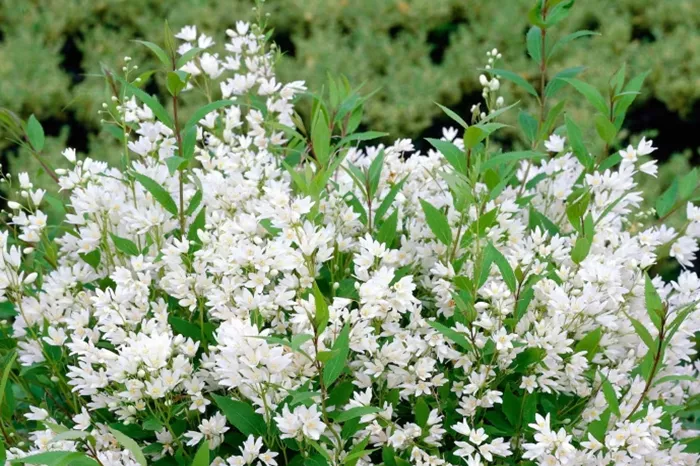Gardeners need to adopt a dual focus. As September unfolds, it’s a month that encourages both reflection and forward planning. Right now, I’m enjoying the present view, but I want to share my plans for the future.
A Moment of Beauty
At this moment, a red admiral butterfly has landed on one of my blue Michaelmas daisies before moving on to a vibrant helenium daisy further down the garden. The helenium, specifically the tall variety called Riverton Beauty, features stunning yellow flowers that contrast beautifully with their dark centers. This butterfly has migrated all the way from North Africa. There was a concerning pause in butterfly activity last month due to the weather, but I’m hoping to see another visitor soon: the painted lady butterfly.
Looking Forward: Three Objectives
As I anticipate the coming months, I’m focused on three gardening goals. The first is for next spring, which requires some planning now. This goal involves hardy annuals, which are typically sown in spring and bloom in summer. These plants only last for one season, but they can brighten up the garden. This year, despite the unusual weather, some annuals like nigella, or love-in-a-mist, have thrived. I expect them to shine alongside the tulips in spring.
Many gardeners overlook the benefits of sowing hardy annuals in autumn. If planted now, they stand a good chance of surviving our milder winters and will bloom in April and May. I first noticed this method while visiting a garden in Dublin, where Helen Dillon successfully grew cornflowers as spring bedding. Since the 1990s, British winters have warmed, making it easier for autumn-sown annuals to survive.
How to Sow Hardy Annuals
You have two main options for planting. The first is to sow seeds directly into well-prepared soil outdoors, similar to what you might have done in spring. The soil is still warm enough for germination, but make sure to choose hardy annuals, not half-hardy ones. Thin out the seedlings next month and let the remaining plants brave the winter. Last year, my autumn-sown annuals survived despite harsh frosts, and they bloomed beautifully in April. I’m hopeful for a mild winter again.
The second option, which I prefer as the warm evenings fade, is to start your hardy annuals in a seed box. Keep them in a warm, sheltered spot for a couple of weeks. Space the seedlings two inches apart, and continue to nurture them. In late October, move them outdoors to acclimatize before planting them in the garden. They also do well in pots, especially alongside tulips. In a mild year, these young plants can thrive until early December, so think of them as resilient additions to your garden.
Among the hardy annuals, my favorites are cornflowers and love-in-a-mist. Last spring, I enjoyed the beautiful blooms of red poppies and orange calendulas. This year, my biggest successes were dark-blue anchusa and sky-blue Nemophila menziesii, a wildflower that thrived in the wet winter. Spring gardens don’t have to rely solely on traditional bedding plants.
Remembering Biennials
My second focus for the future involves biennials like Sweet Williams and Canterbury bells. I usually forget to sow these in mid-June, the ideal time for them to bloom the following June. This year, I missed that window, so I’m relying on what I can find in stores. Latecomers must be strategic.
Online, you can find small plants of Sweet Williams and Canterbury bells for reasonable prices. However, be cautious. Orders may take weeks to arrive, and the small plug plants (often only 5-6 cm in diameter) might struggle if planted outdoors in winter. Biennials need to establish good size to bloom well.
An alternative is to buy larger plants in one-liter pots, which can cost up to £19.99 each. While this might seem steep, it’s important to consider that biennials will only bloom for a season before dying. The best approach is to buy the smaller plug plants, pot them individually, and grow them in a sheltered space until they’re sturdy. It might take until February or March before they can be planted outside, but the effort is worth it.
A Holiday Surprise
My third focus is a tip I learned from the former FT columnist Arthur Hellyer. If you buy a deutzia, plant it in a good-sized pot and move it to a heated greenhouse in late October, it can produce flowers by Christmas. Last year, I tried this with a white-flowered deutzia crenata Nikko, which resulted in beautiful blooms during a particularly gray holiday season. Afterward, I planted it in my garden, and while it didn’t flower again in June, it is getting ready for next year.
Back to the Present
Now, as I reflect on my surroundings, I notice my hardy blue plumbago thriving in the garden. It’s a must-have for sunny spots. Just in time, two painted lady butterflies are basking on its flowers. If my cornflowers bloom come spring, they’ll be a lovely sight as well, although painted ladies typically arrive a bit later.
Related topics:


